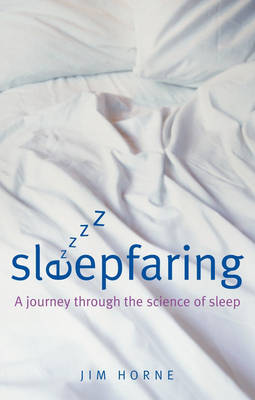By Kirsty McHugh, OUP UK
We’ve all heard people talk of needing their ‘beauty sleep’, but is there really such a thing? Professor Jim Horne is the Director of the Sleep Research Centre at Loughborough University, UK, as well as the Editor-in-Chief of the Journal of Sleep Research. His book, Sleepfaring: A journey through the science of sleep, reveals what happens in our brains and in our bodies when we sleep. In the short excerpt below he reveals whether we really can get that beauty sleep we all talk about.
What about beauty sleep and those wrinkles that are supposed to vanish with sleep overnight? Indeed, they may disappear, because sleep (rather than just lying down) causes the face and forehead to perspire more than usual, with more water being retained within the skin to puff it up and flatten those wrinkles. Alas, morning arising and greater exposure to the air dry the skin out and the wrinkles pop back. Many so-called anti-wrinkle creams applied at night simply allow the skin to retain more of this water and help keep it puffed up for longer in the morning, but do not actually remove or prevent wrinkles. By the way, the skin just below the eyes is particularly thin and more vulnerable to being puffed up like this during sleep, causing some people to wake up with noticeable bags under their eyes, which soon flatten out next morning. The problem is that all this stretching and contraction of the skin will eventually produce all too many wrinkles under the eyes.
 When we sleep, and even when we are awake, it is usually the face that is most exposed to the air, and because of this we can lose a surprisingly large amount of heat from our faces. That is why, when we become hot and need to cool down, the cheeks and forehead easily become red, because the skin here contains a rich supply of tiny blood vessels (capillaries) that expand with warm blood—hence the flushing. Heat from the blood in the cheeks radiates through the thin layer of skin above and is lost to the outside. Even more heat can be lost through perspiration or, rather, from the evaporation of the perspired water (called ‘latent heat loss’), especially from the cheeks and forehead. The body continually produces heat during sleep, as it does in wakefulness, and to stop overheating it has to lose excess heat, which it can do fairly effectively from the exposed face, because the rest of the body is usually too well insulated by clothes or bedding.
When we sleep, and even when we are awake, it is usually the face that is most exposed to the air, and because of this we can lose a surprisingly large amount of heat from our faces. That is why, when we become hot and need to cool down, the cheeks and forehead easily become red, because the skin here contains a rich supply of tiny blood vessels (capillaries) that expand with warm blood—hence the flushing. Heat from the blood in the cheeks radiates through the thin layer of skin above and is lost to the outside. Even more heat can be lost through perspiration or, rather, from the evaporation of the perspired water (called ‘latent heat loss’), especially from the cheeks and forehead. The body continually produces heat during sleep, as it does in wakefulness, and to stop overheating it has to lose excess heat, which it can do fairly effectively from the exposed face, because the rest of the body is usually too well insulated by clothes or bedding.
Blood moves heat around the body (just like hot water in central heating and car cooling systems) and dumps it through its cheek radiators. Losing heat just before sleep is important because the body likes to cool down a little (by about 0.3°C) then, as this helps the process of falling asleep. It is the reason why our cheeks are often flushed at bedtime. To be more precise, it is the brain that likes to be cooler at this time, and facial flushing is particularly good at doing this through a rather amazing process—the cooled blood from the flushed cheeks drains into a special vein, which can just be seen as that blue patch close to the skin surface in the inside corners of each eye. From there


